Marahni Trek – Day 1: Sun, Sweat and Steepness
28. + 29. September 2023
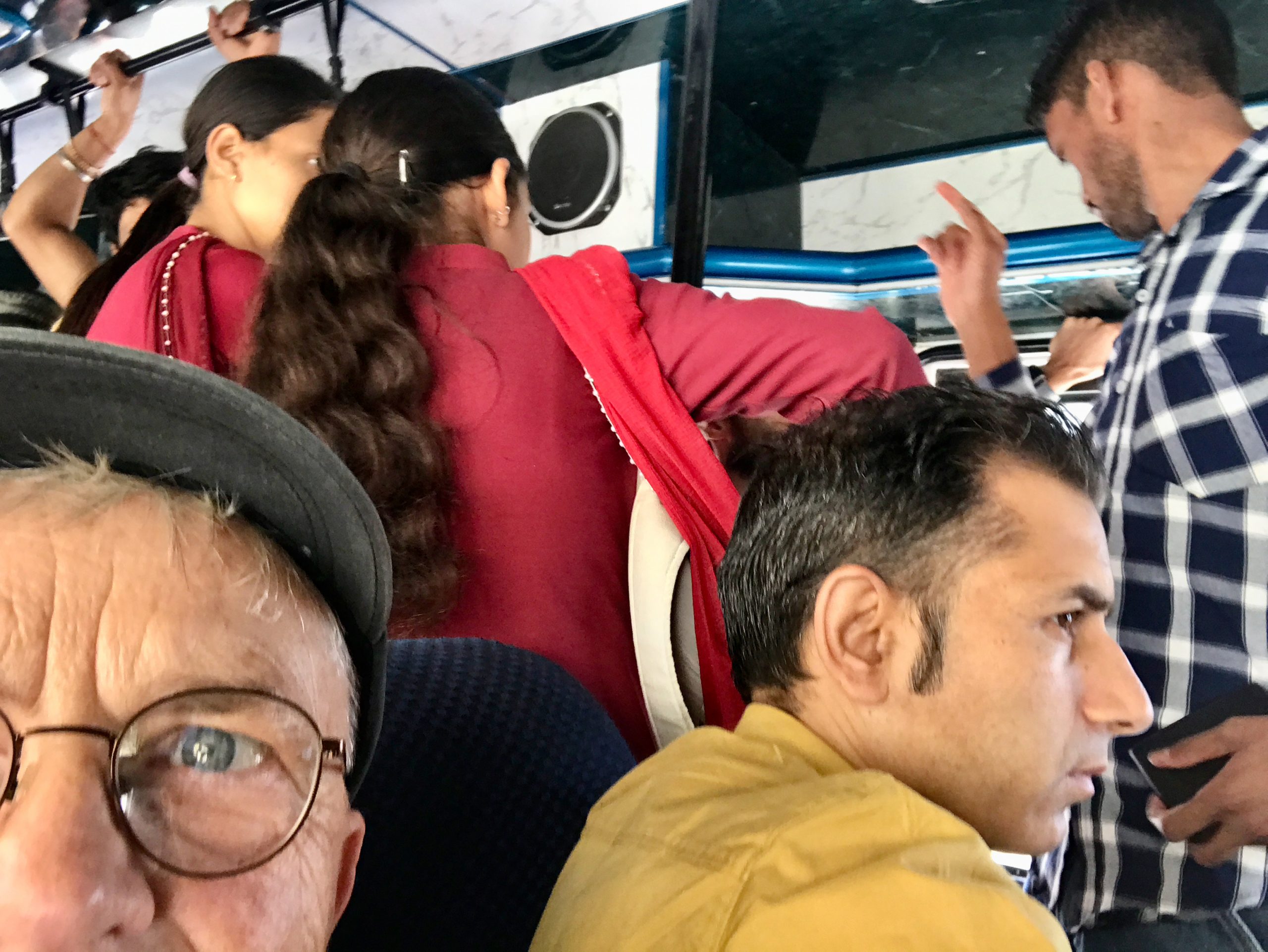
When I was in Bihar a few days ago, I had told host Hema that I would like to do a trek in the Great Himalayan National Park – but of course it was too expensive on my own. She looked and asked – and then I was connected! I was going to do the 4-day Marhani trek with an Indian couple. The start would be on 29.9. So on the 28th I set off for the Tirthan Valley, where I met up with the couple and we had an overnight stay before the start. Again, it took what felt like forever for the buses (had to change twice) to wind their way through the mountains.
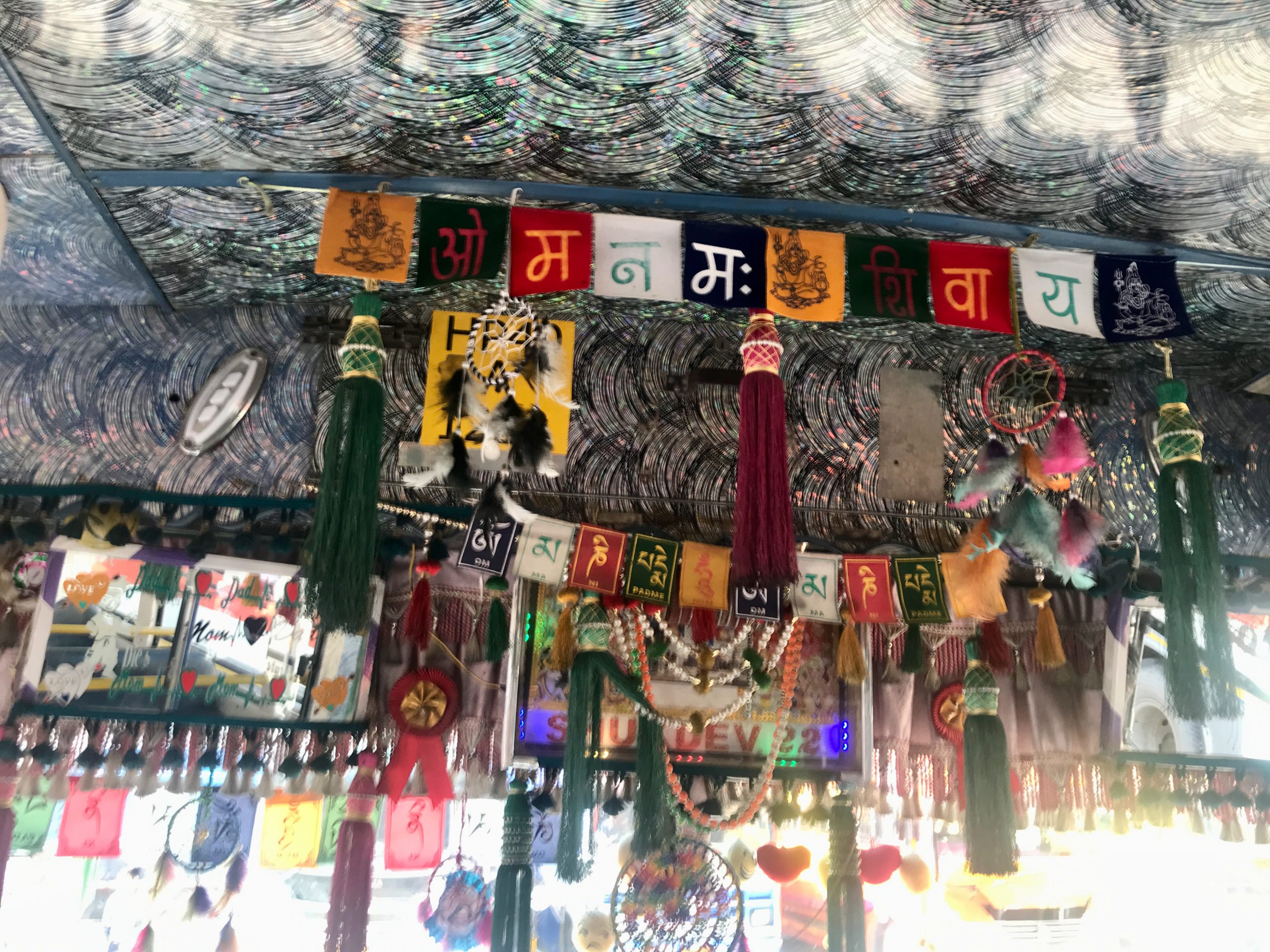 Busdeco
Busdeco
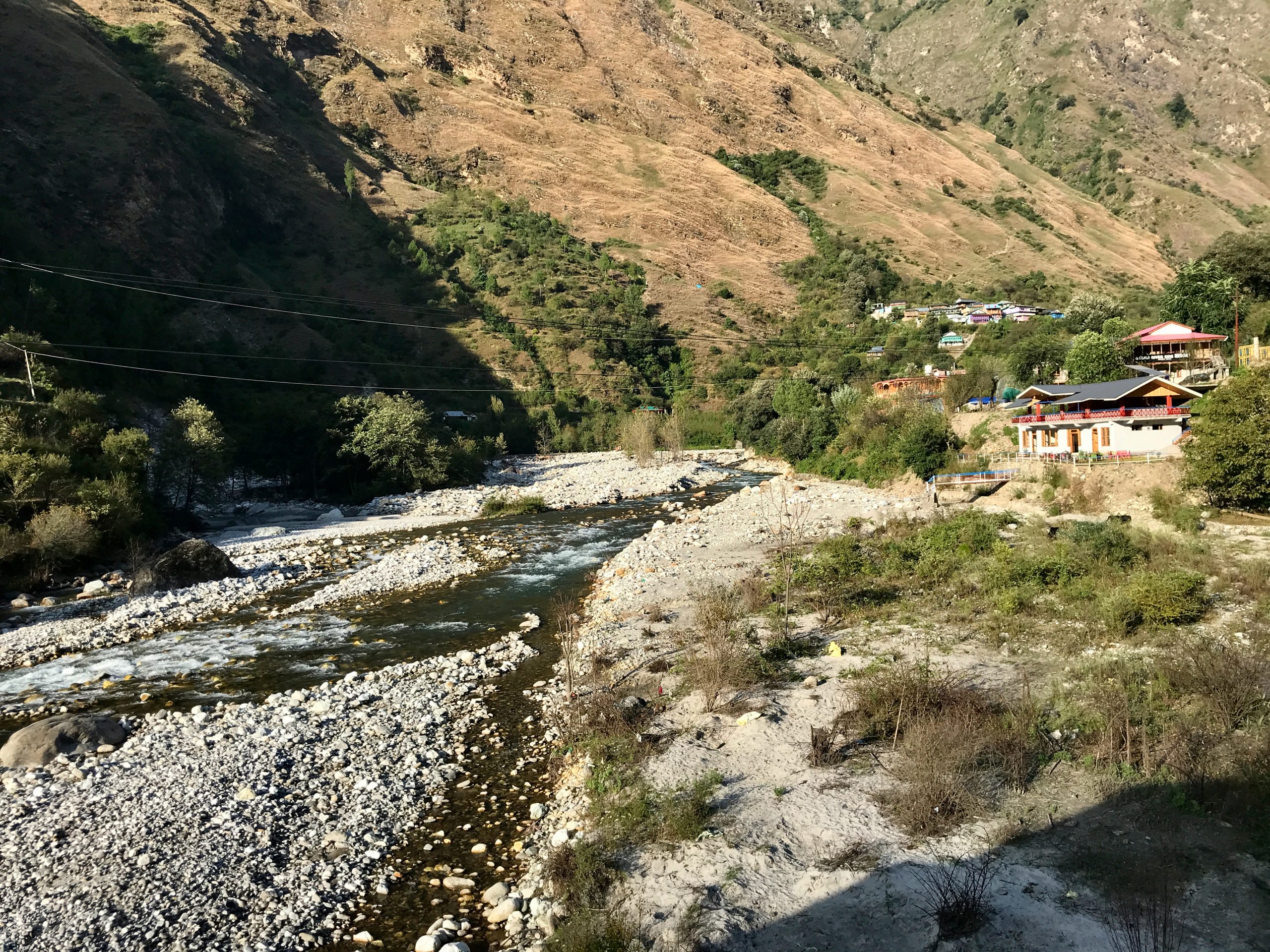 Tirthan Valley
Tirthan Valley
The mountains here have some deep folds where rivers flow on the bottom. One of these folds is called Tirthan Valley with the Tirthan River down. Small clusters of houses and tourist accommodation are lined up along it. Foreign tourists are rare here, however. The last place is called Gushaini, and from there the 5 km wide belt zone starts, where one is allowed to settle and cultivate under certain conditions. After that is the national park.
We first drove up through the zone – Pekhri is a village at 2,000 m and after that it is only walking. The sun laughed, the hiker’s heart too, the hare’s heart could be scared on the way up, as parts of the road had broken off here too and at one point it went extremely close to the deep abyss.
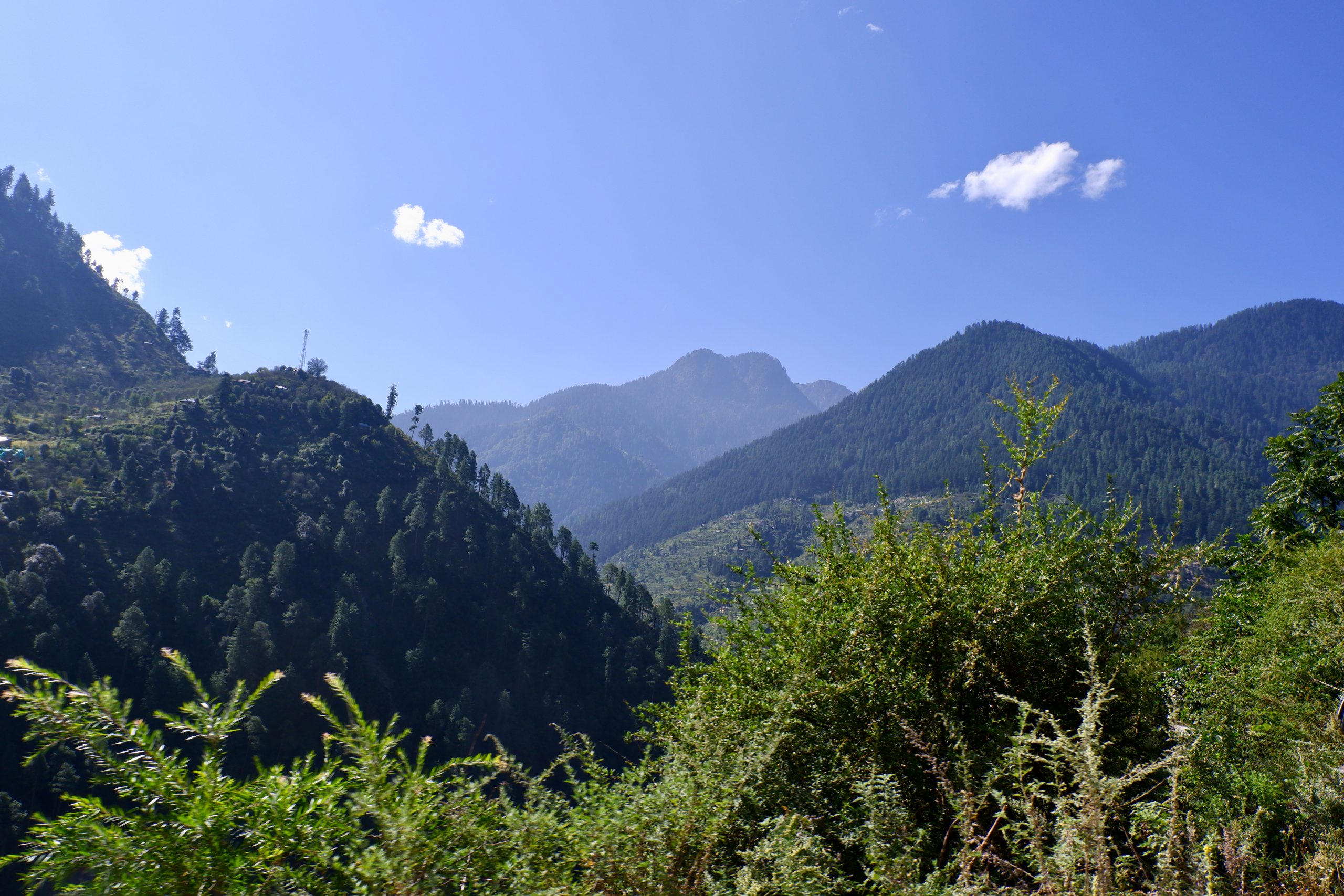 Landscape
Landscape
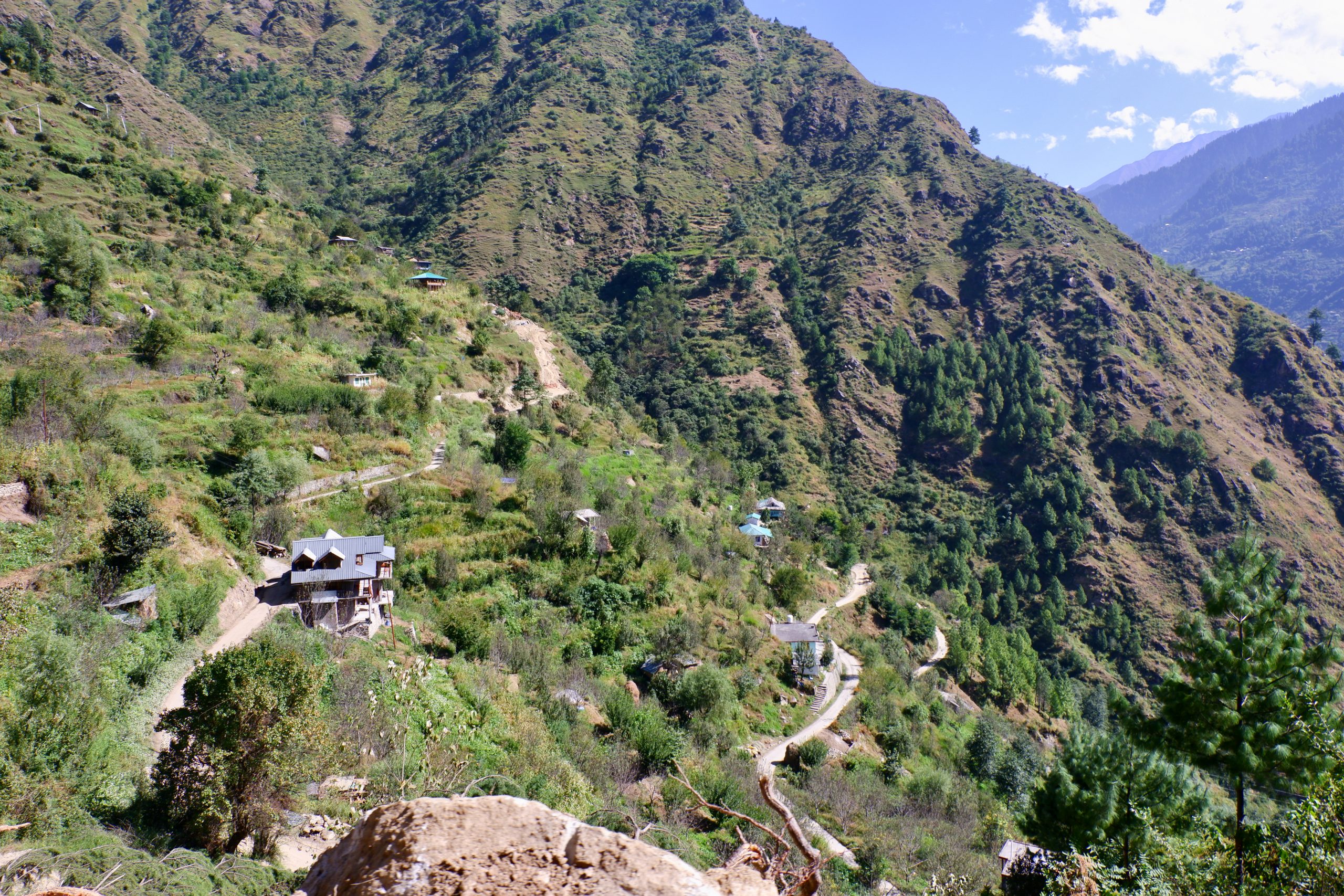 drive high
drive high
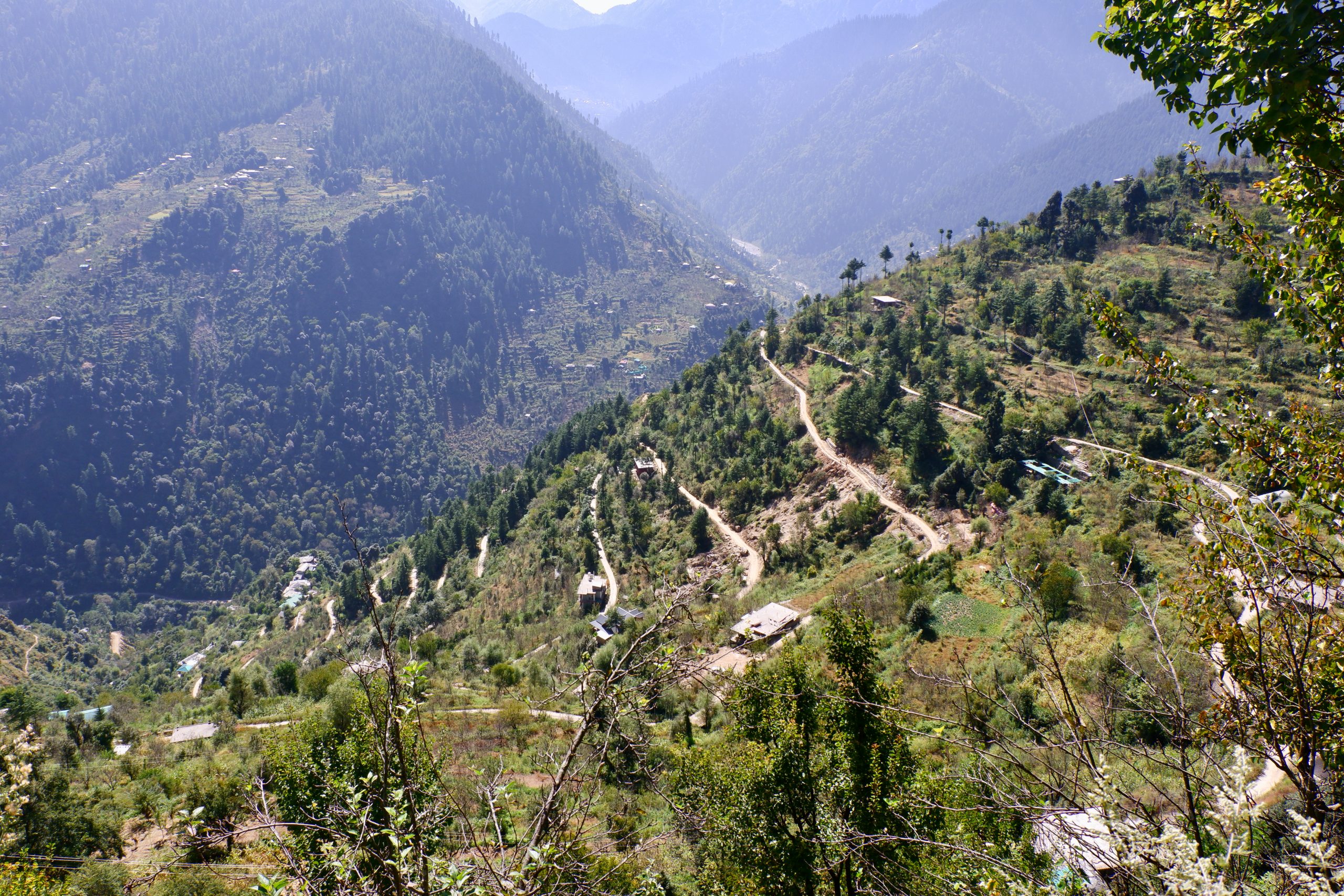 road from the other side
road from the other side
We started. We, that is Natasha and her husband Sanil from Bangalore, both 47 years old and have found great joy in mountain hiking only a few years ago. He works in a bank where he is responsible for start-ups, she is currently setting up a start-up. We also had a guide called Keshav, who has been trekking through the mountains with people for 20 years. Only about 10% of them are foreign. And then there were 5 porters who carried everything. Almost everything, we carried our own stuff. Keshav didn’t think I could do it the day before when he saw me. It went steadily upwards. Every few steps there were slightly different looks all around again and I became quite photo-happy. There were little mini fields of maize, beans, peas, etc.
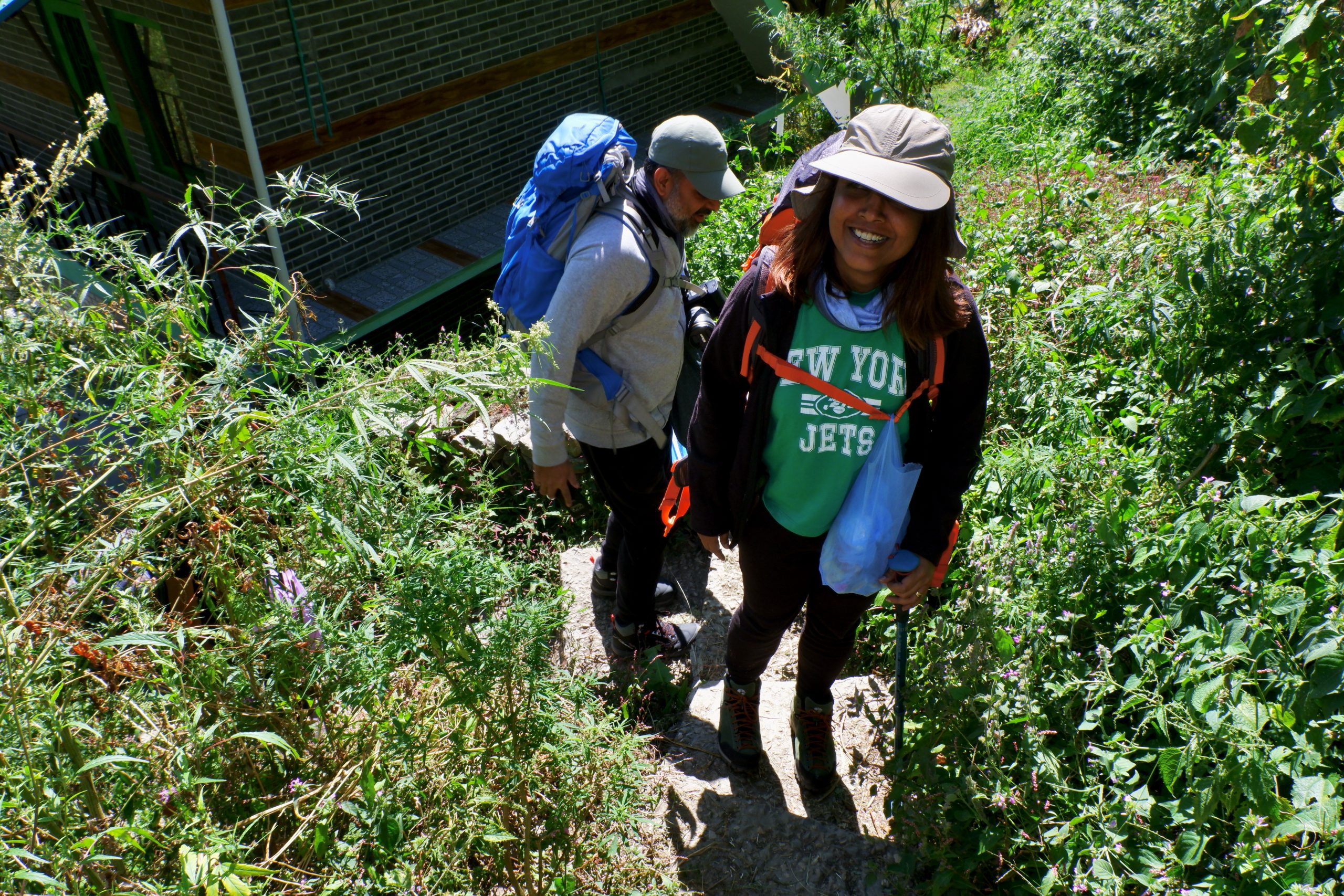 1
1
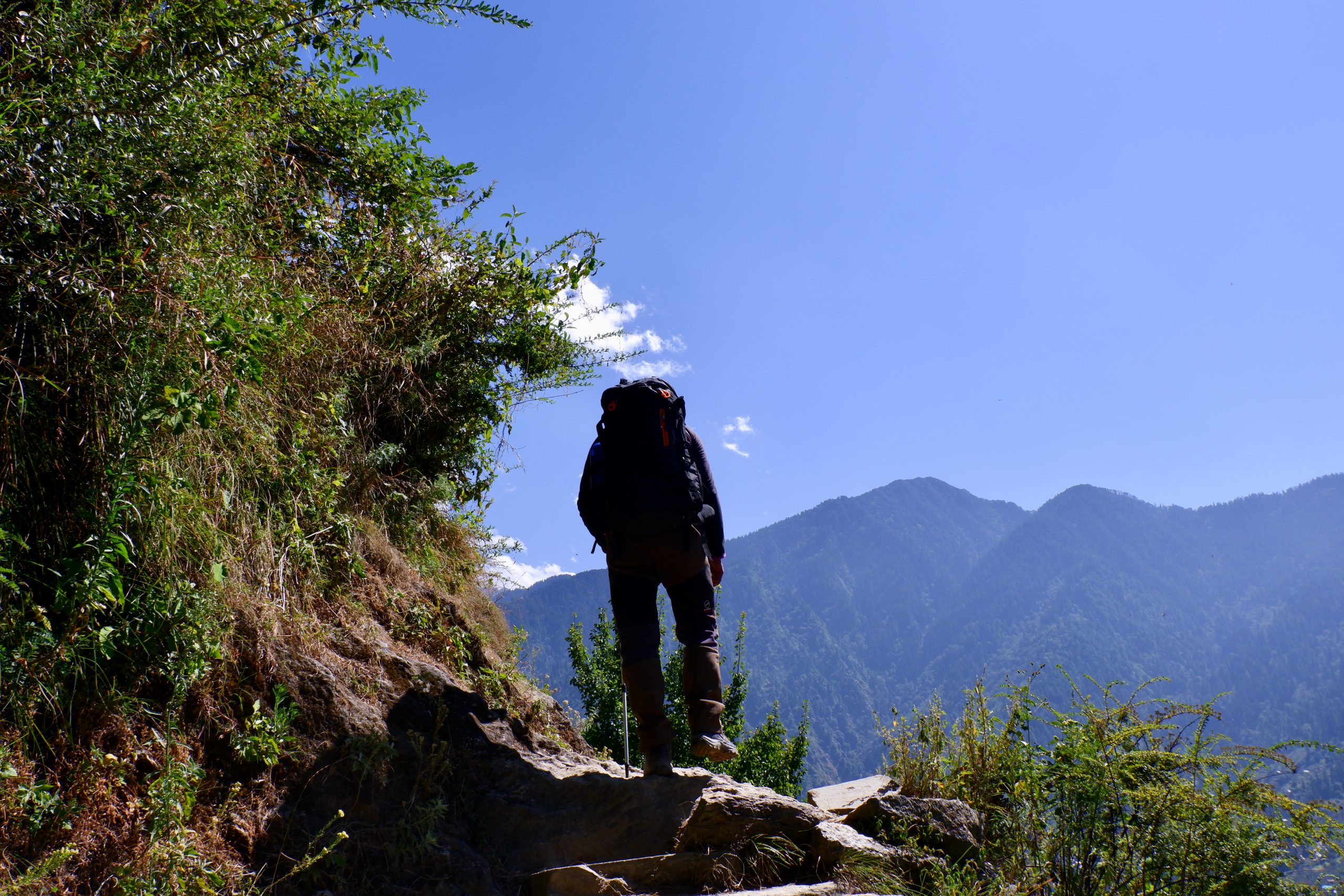 2
2
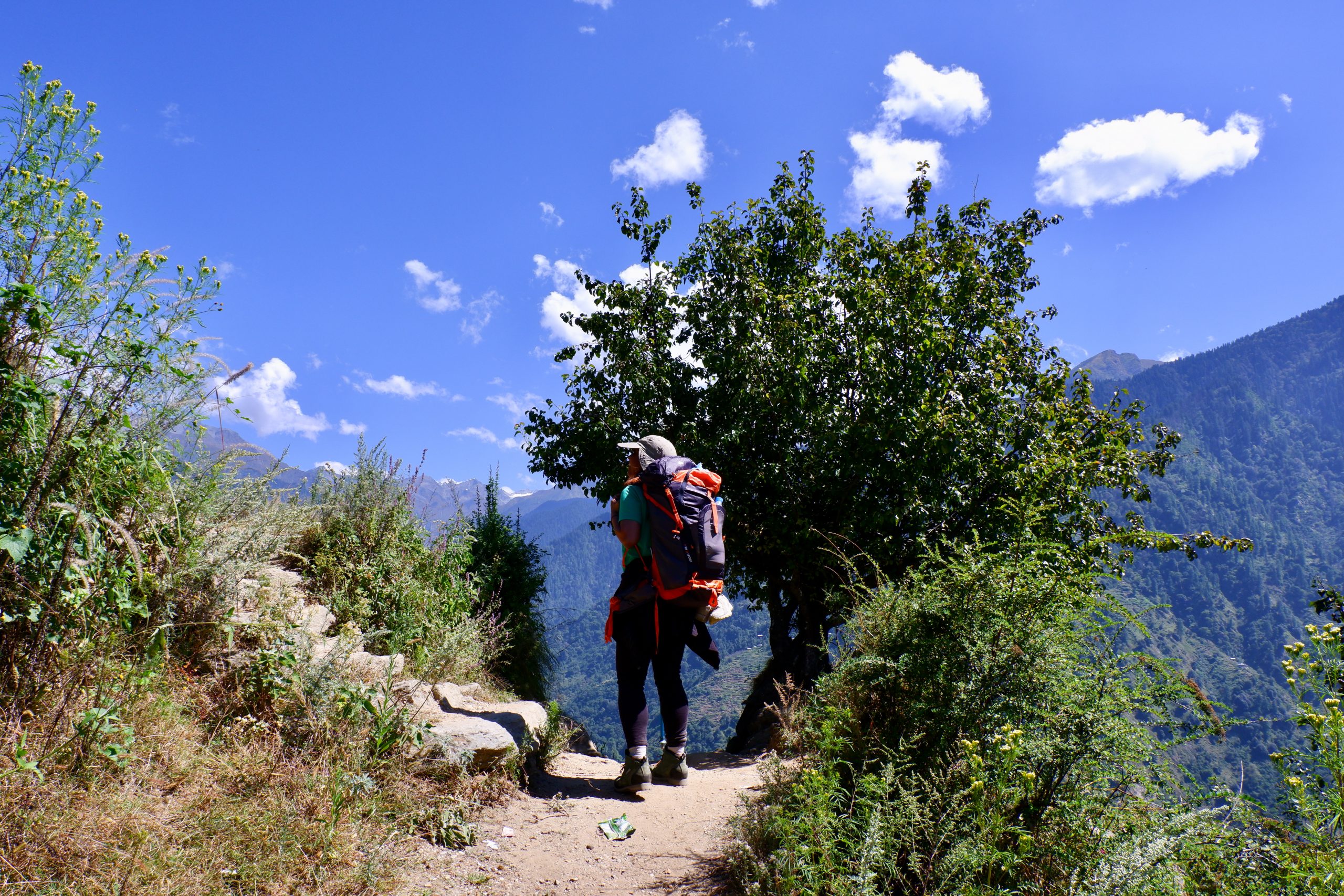 3
3
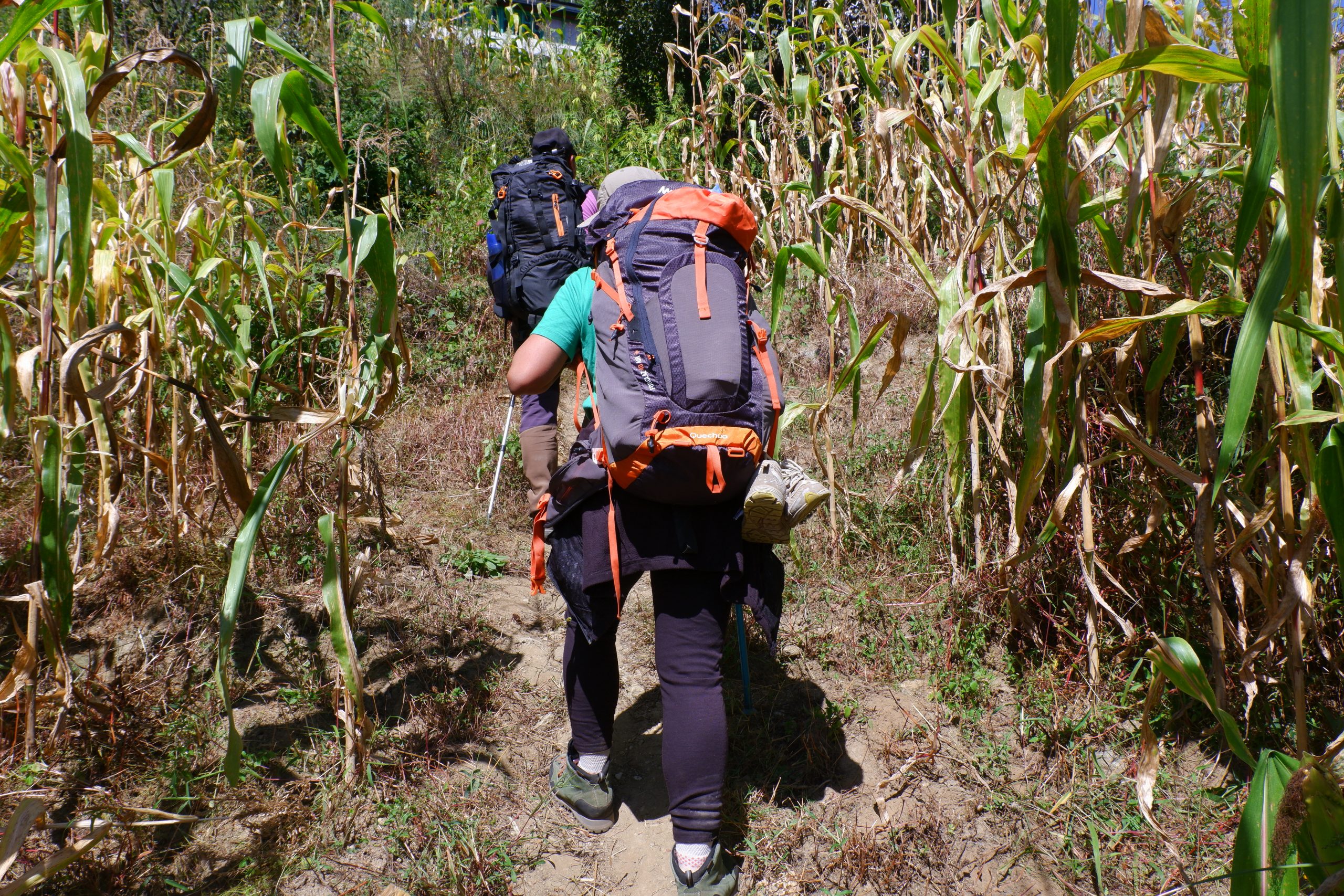 4
4
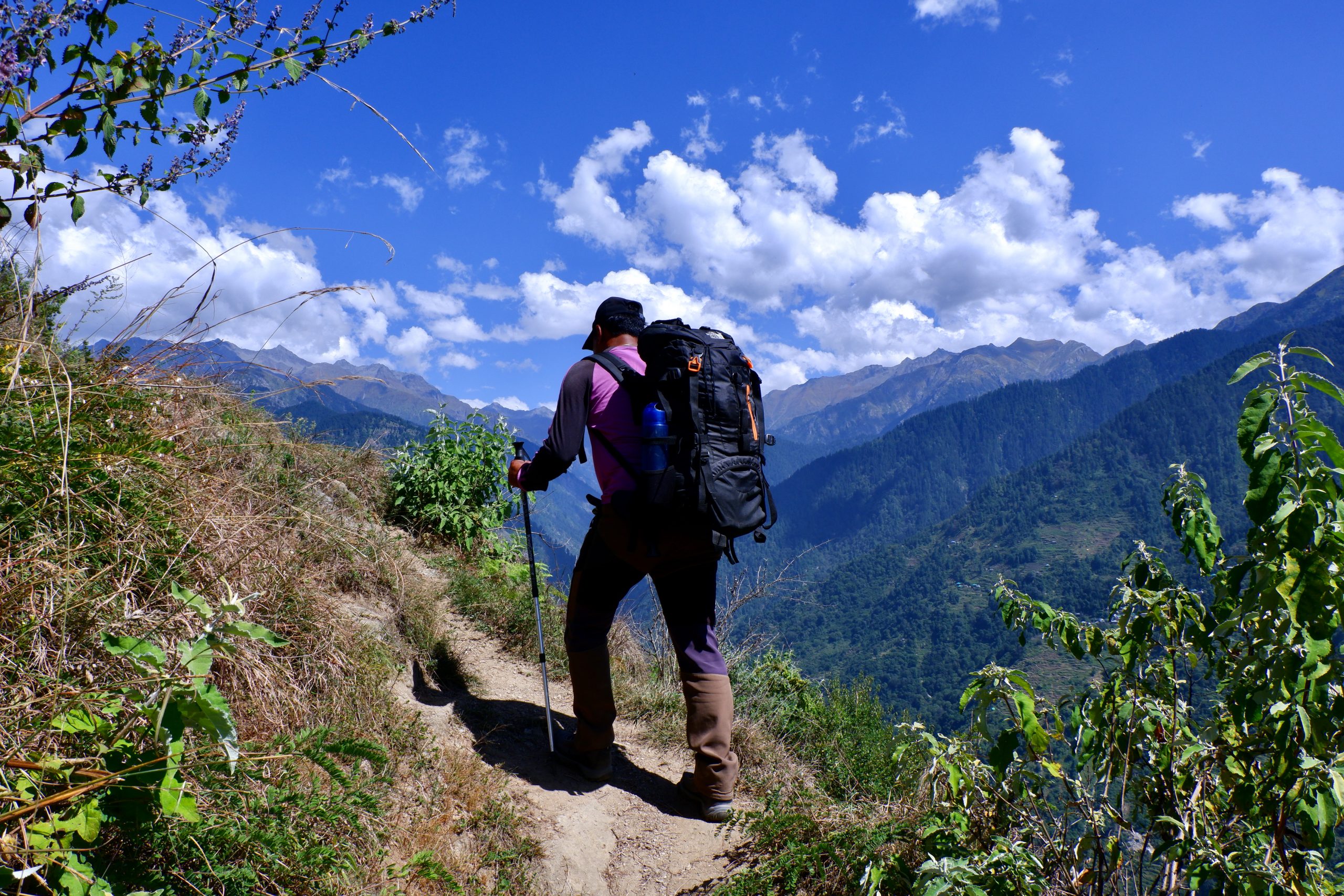 5
5
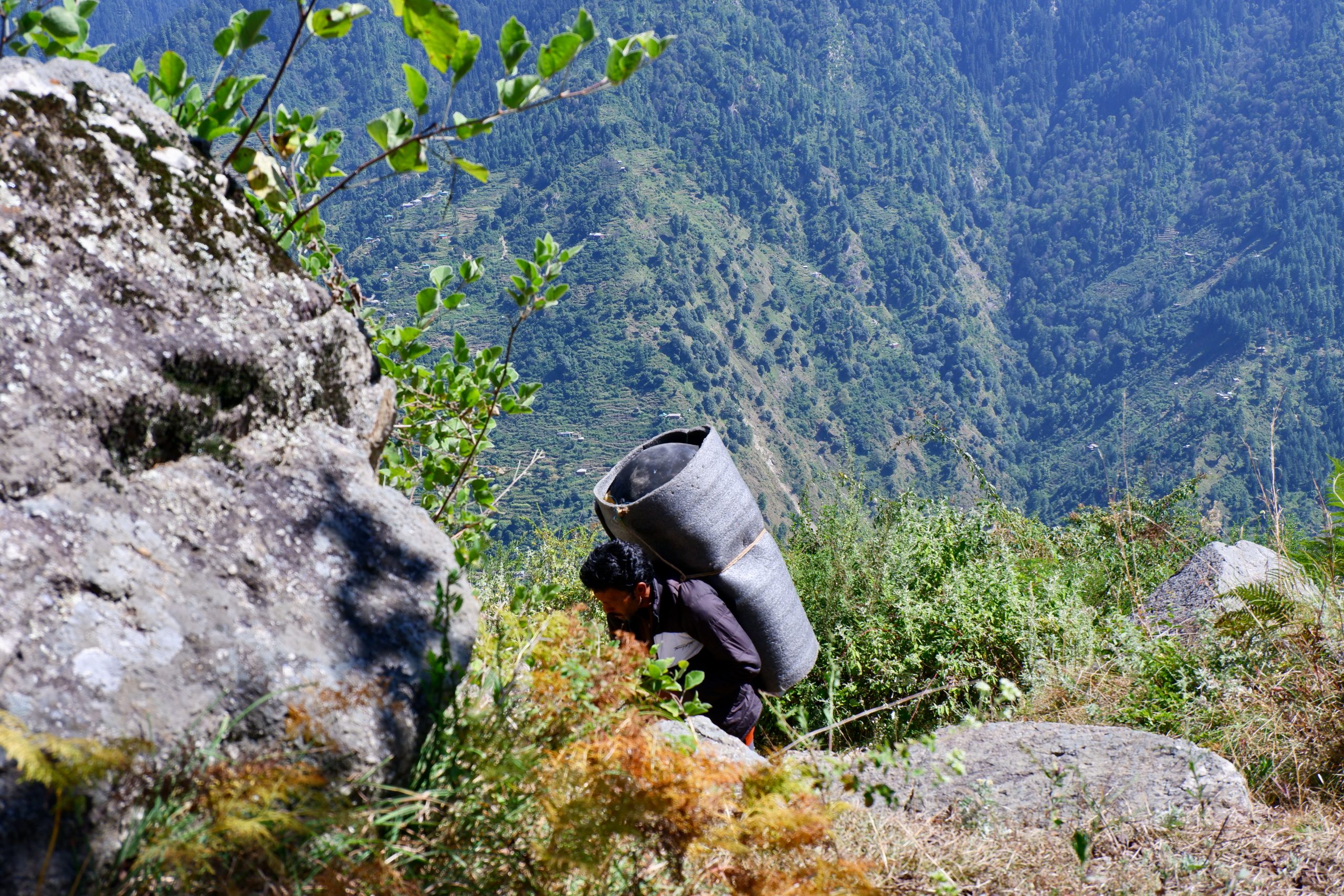 6
6
After some time we came to the last village: Lakcha. Unbelievable what they have dragged up here to build a house and even all the glass! Himachal Pradesh is really the area where I always wonder most why people thought it was a good idea to build a big house so high up on a steep mountainside. Whether single or clustered together.
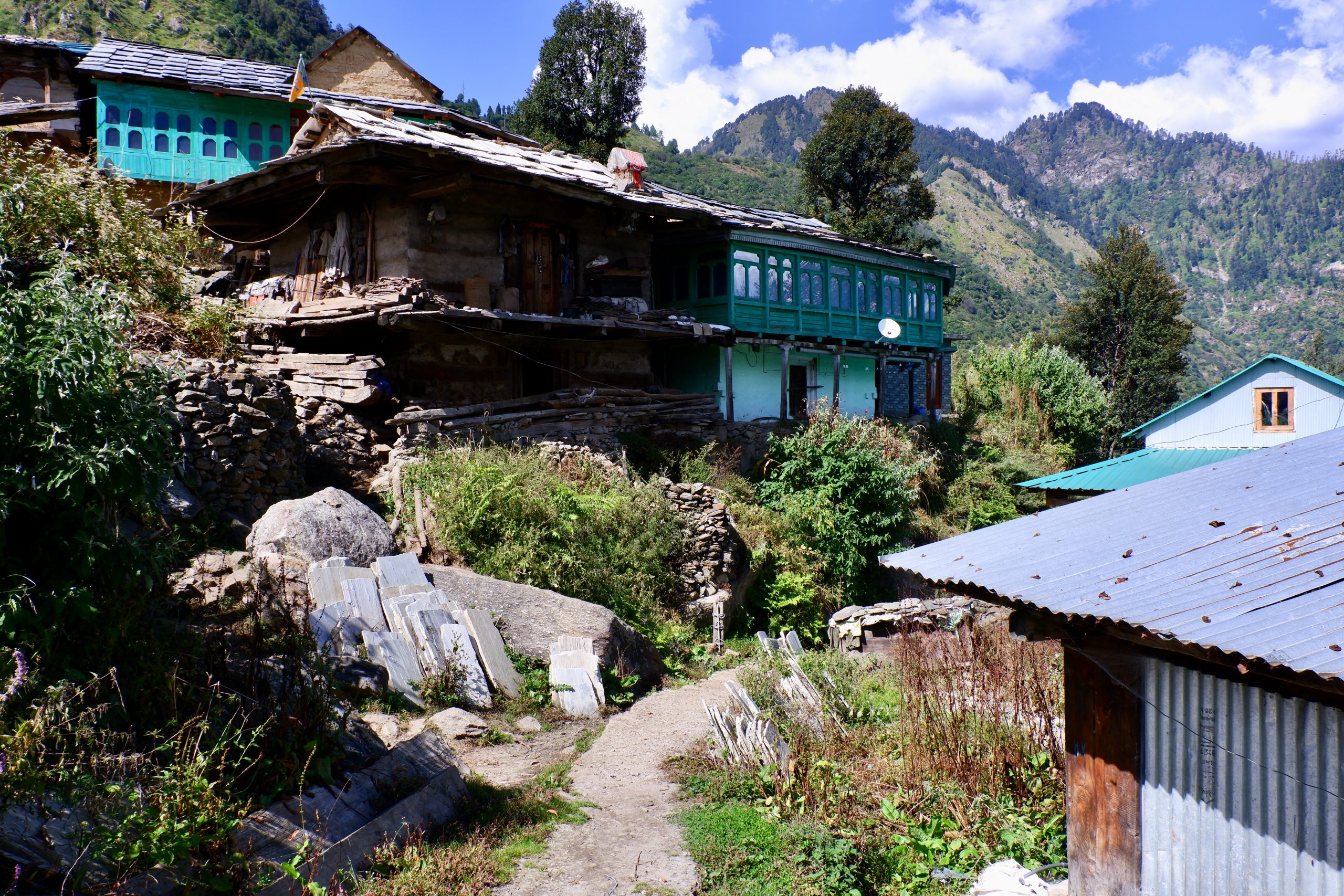 1
1
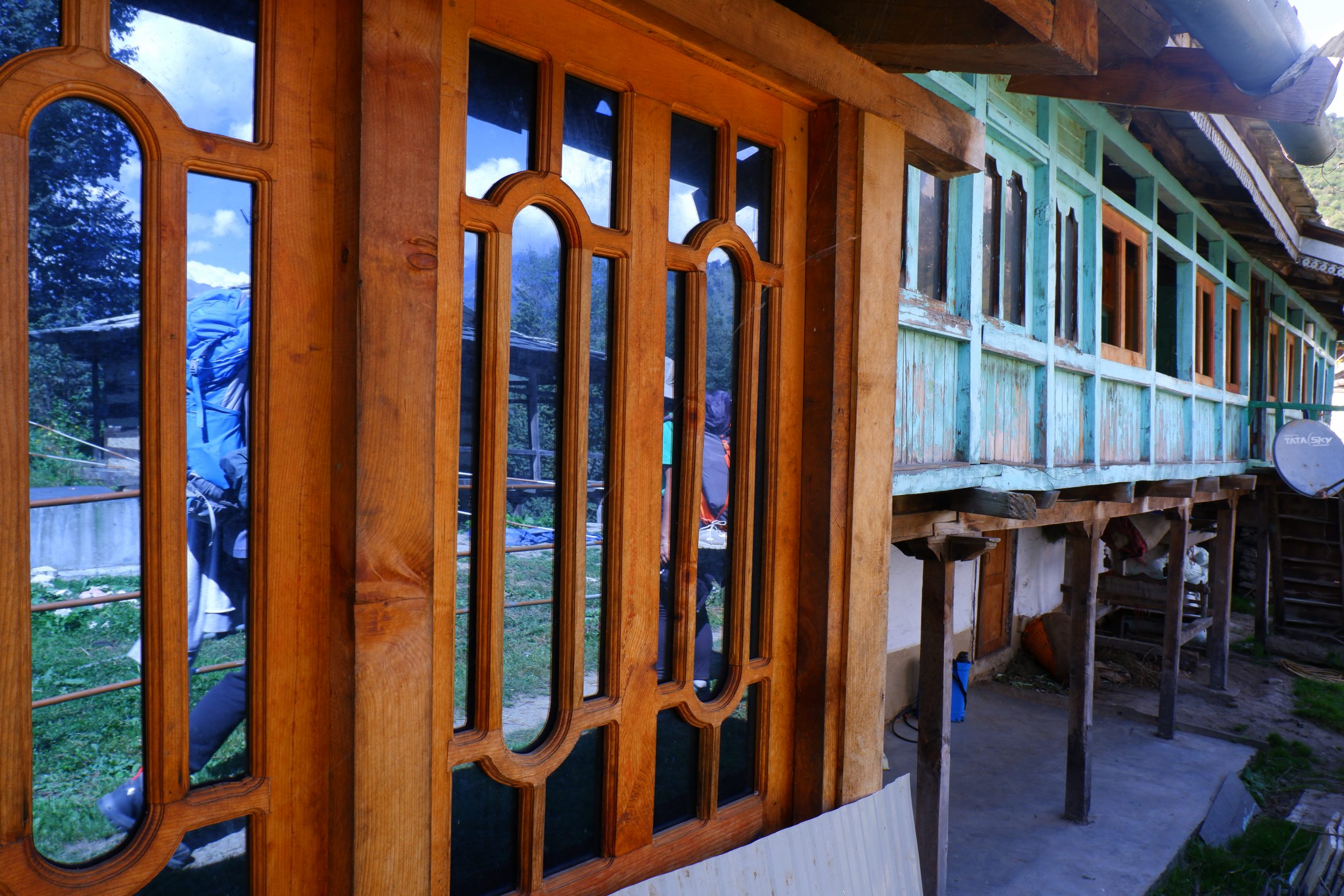 2
2
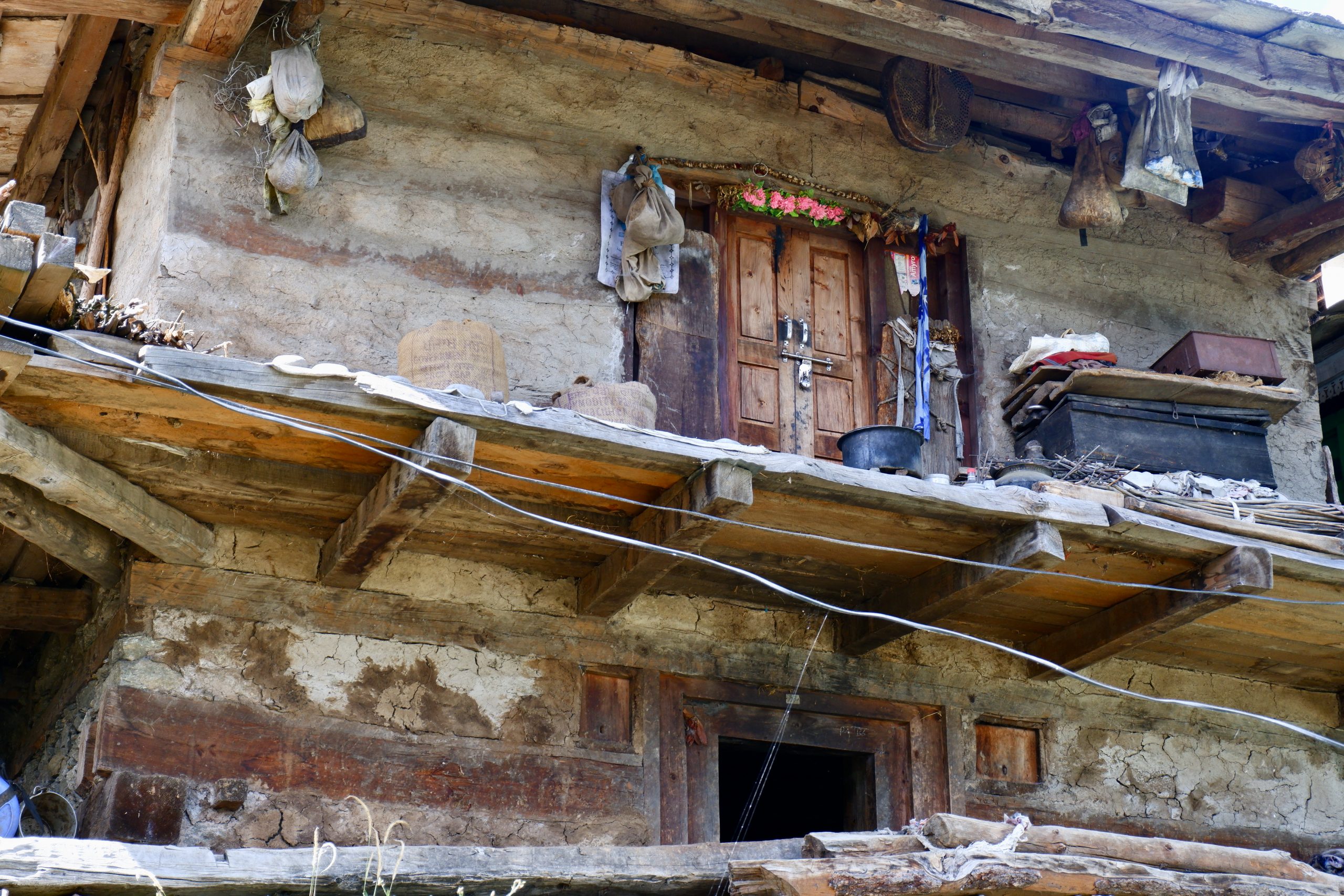 3
3
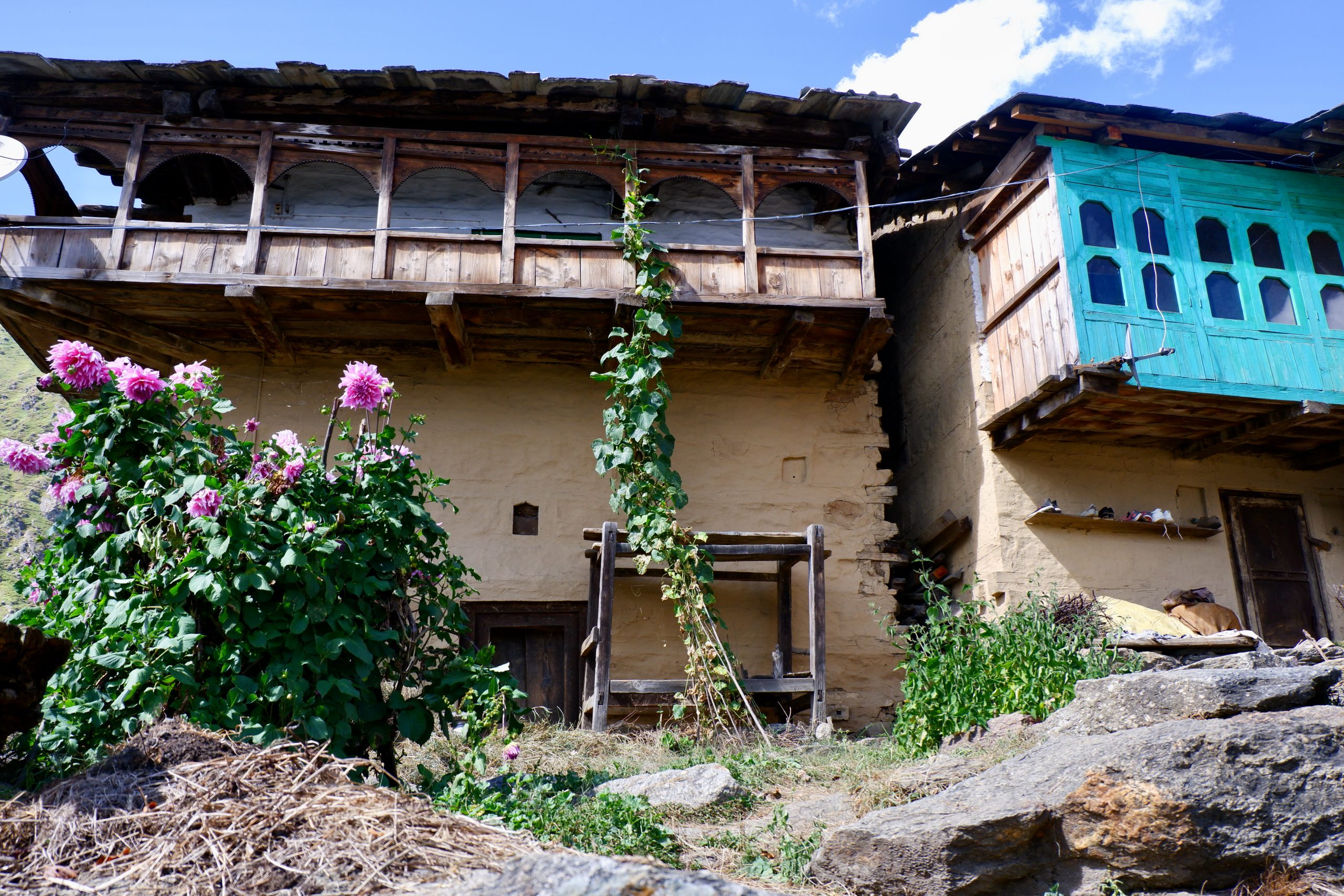 4
4
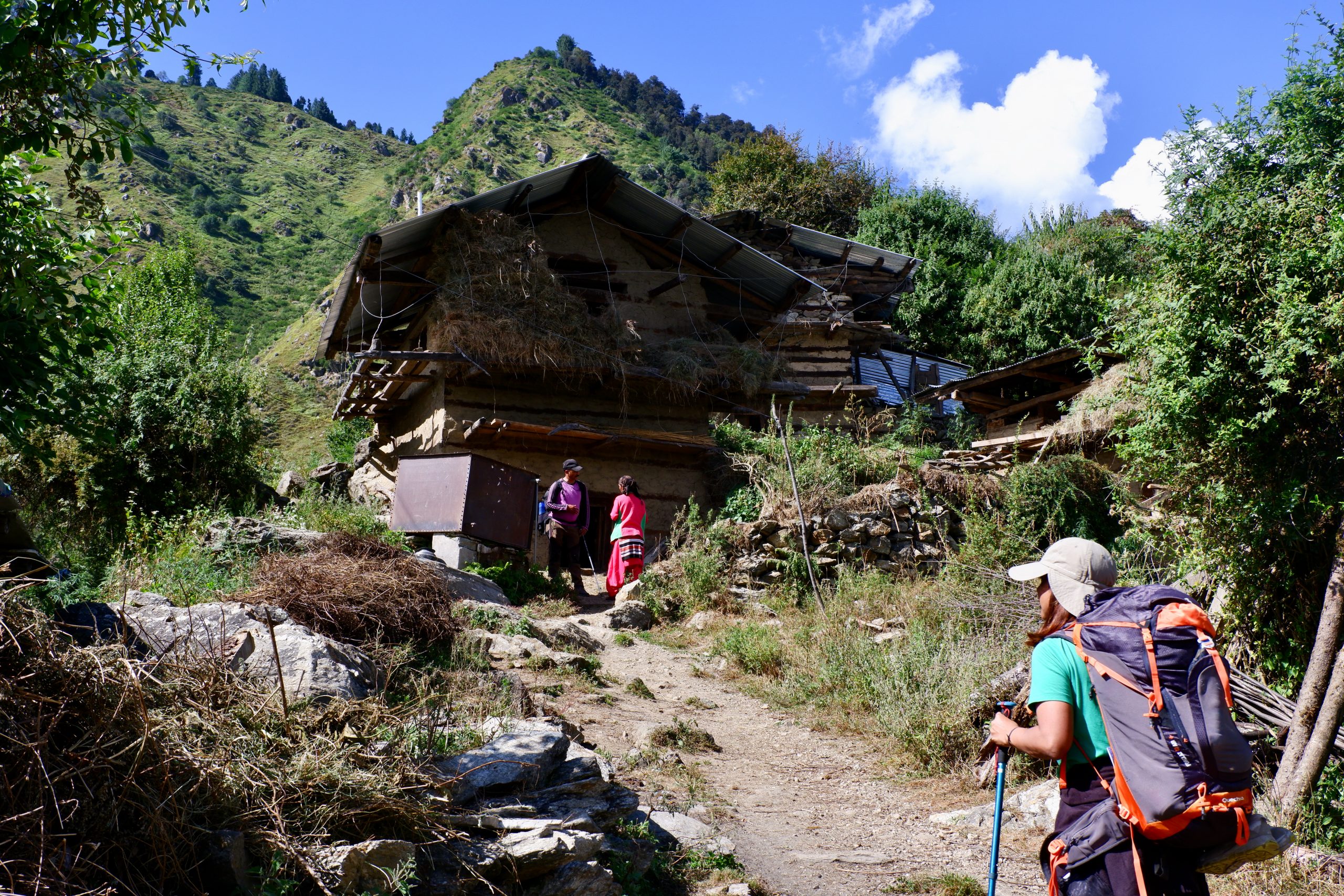 5
5
And as a special civilian amenity, Lakcha also had mobile phone reception masts that reached relatively far.
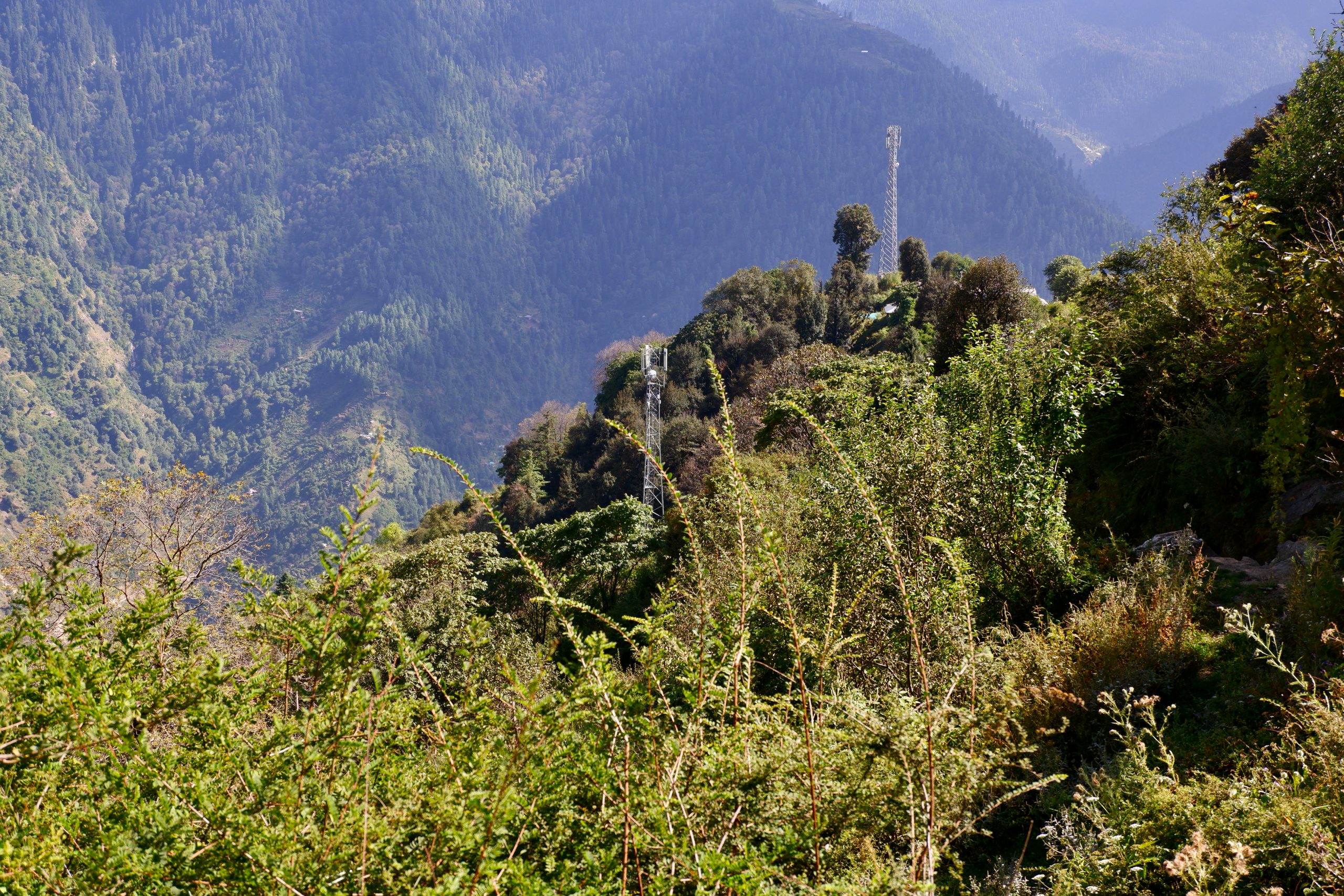 Masts
Masts
It was quite hot in the sun and we more or less scurried from shade to shade. The sweat was running.
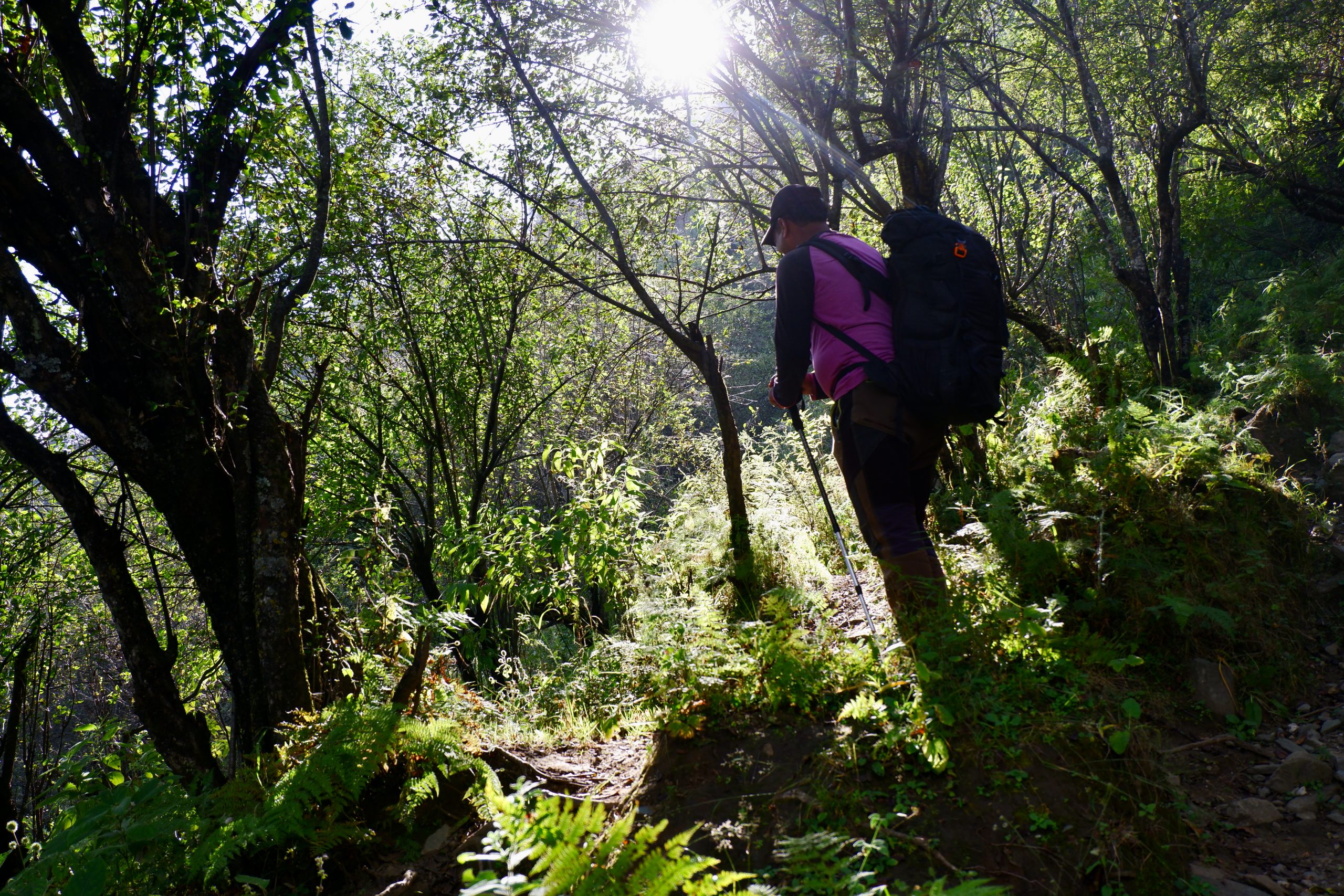 Shadow
Shadow
After that, the Great Himalayan National Park started somewhere. I must confess that I didn’t quite get it. I had been to the belt in 2016 and asked about treks etc. I was told that these could only be done with porters, as no livestock were allowed in the park. However, throughout our tour there were always herds of sheep, cows and horses. I was told that I was really in the national park. I really don’t understand properly.
The Great Himalayan National Park is 1,171 square kilometres in size. It became a national park in 1984 and is home to a very high number of different and sometimes rare species of plants and animals. The people who had previously settled here or used the area for cultivation and animal husbandry were designated. Timber extraction and the collection of medicinal plants were also banned. Of course, this was no joy for the settlers. They received financial compensation – and the opportunity to participate in the trekking and tourism business. Trekking is allowed here on various routes. A cooperative was formed. But there is obviously some stress about who earns how much and how and etc.t. I haven’t quite made it through yet. Let’s see if I can describe it properly until the last trekking blog post.
In 2014, the park was declared a UNESCO National Heritage Site, so it offers an even greater incentive to visit. I was pretty excited too. There were many flowering plants to see – but now, at the beginning of autumn, only a fraction of what blooms here in spring.
 flowermeadow
flowermeadow
Our day’s workload was not that far, but it was relatively steep going up. There was no climbing, but it was enough to make you sweat. 800 altitude metres further up, we reached our destination for the day: Rangthar. Here, on a kind of small plateau, there is a meadow landscape where it is good to camp. However, for me, something crucial to camping happiness was missing here: a water source! You had to carry everything with you for drinking, cooking and brushing your teeth – though washing yourself was not really managable. But the view was fantastic.
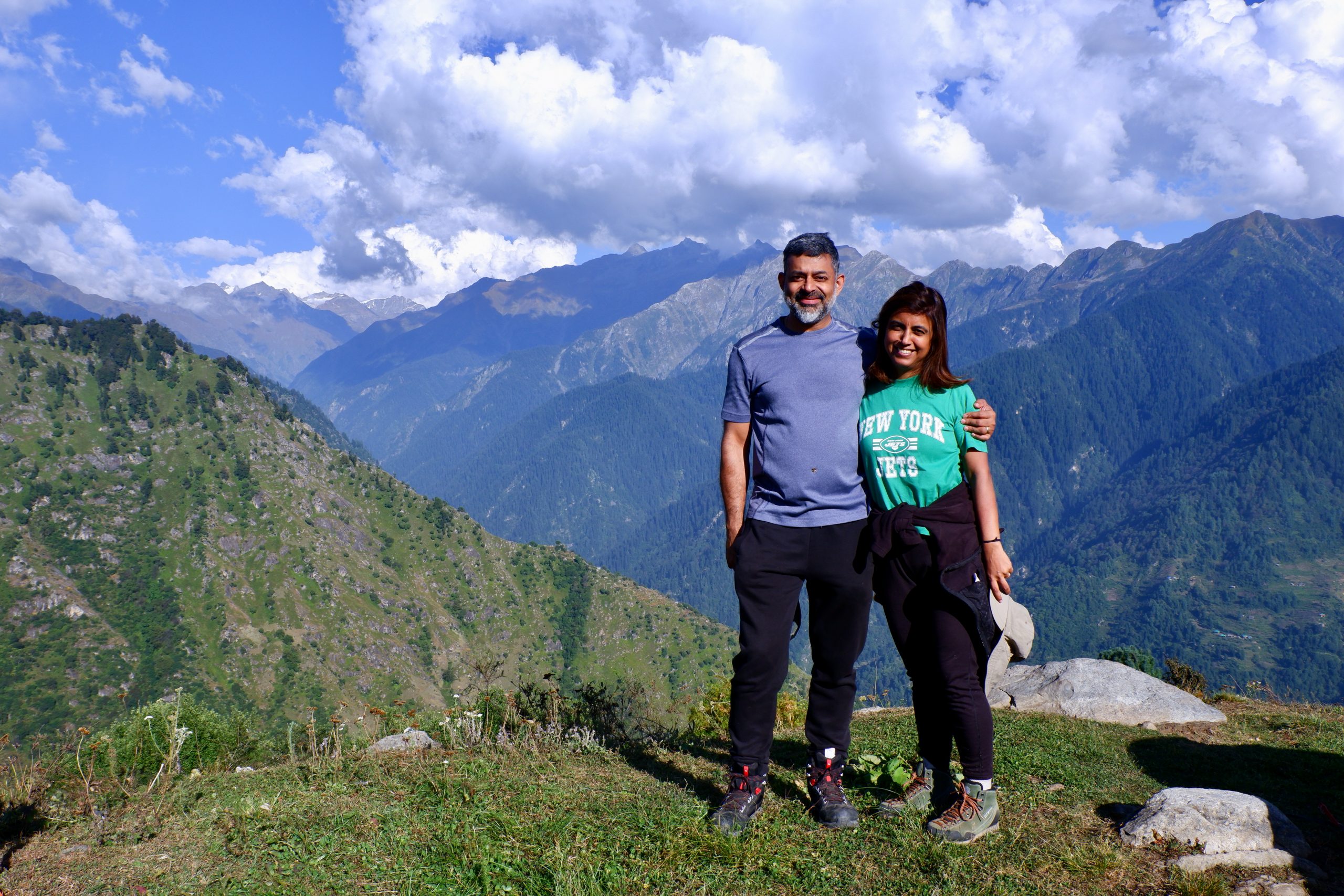 Sanil + Natasha
Sanil + Natasha
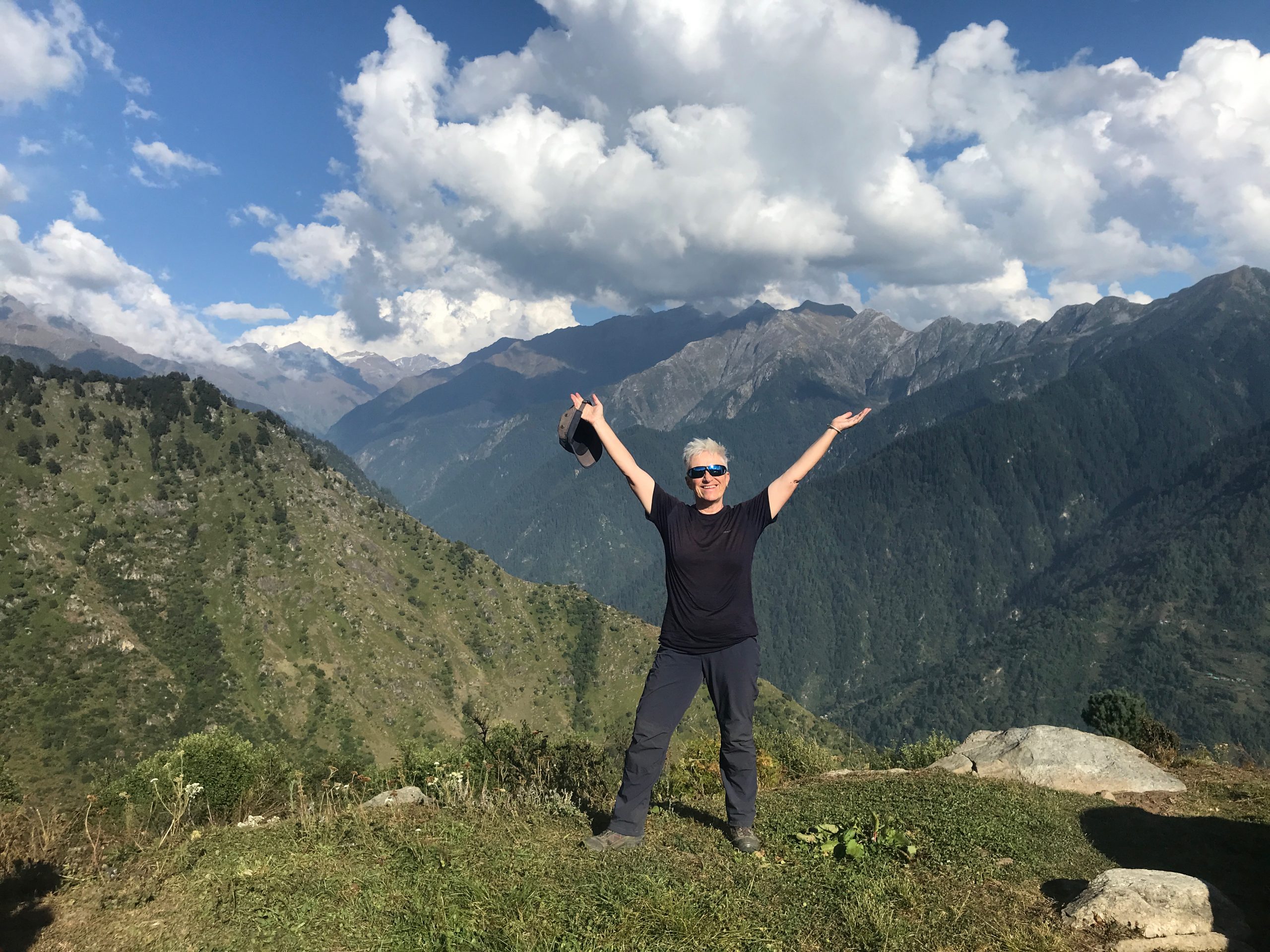 me
me
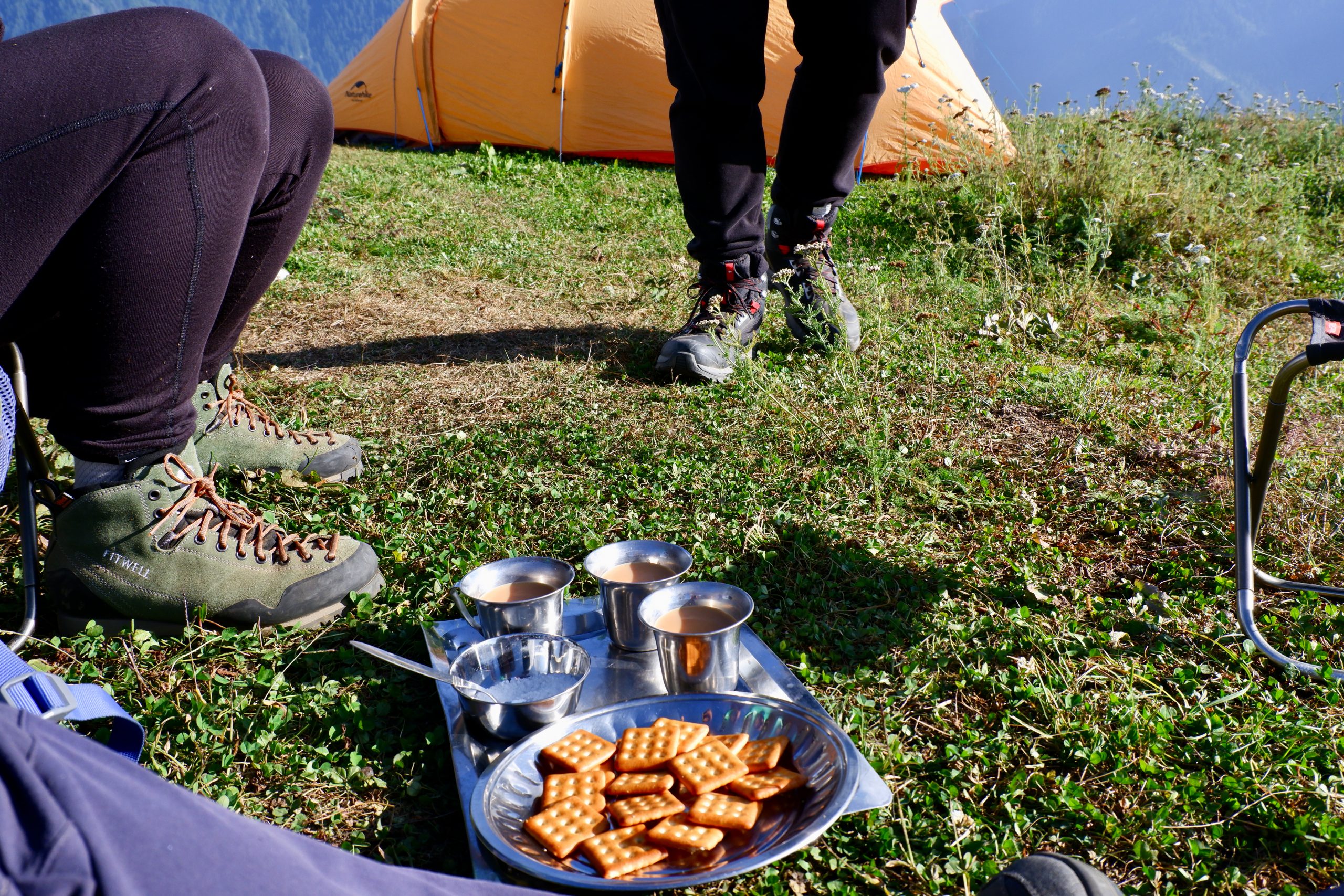 Tea
Tea
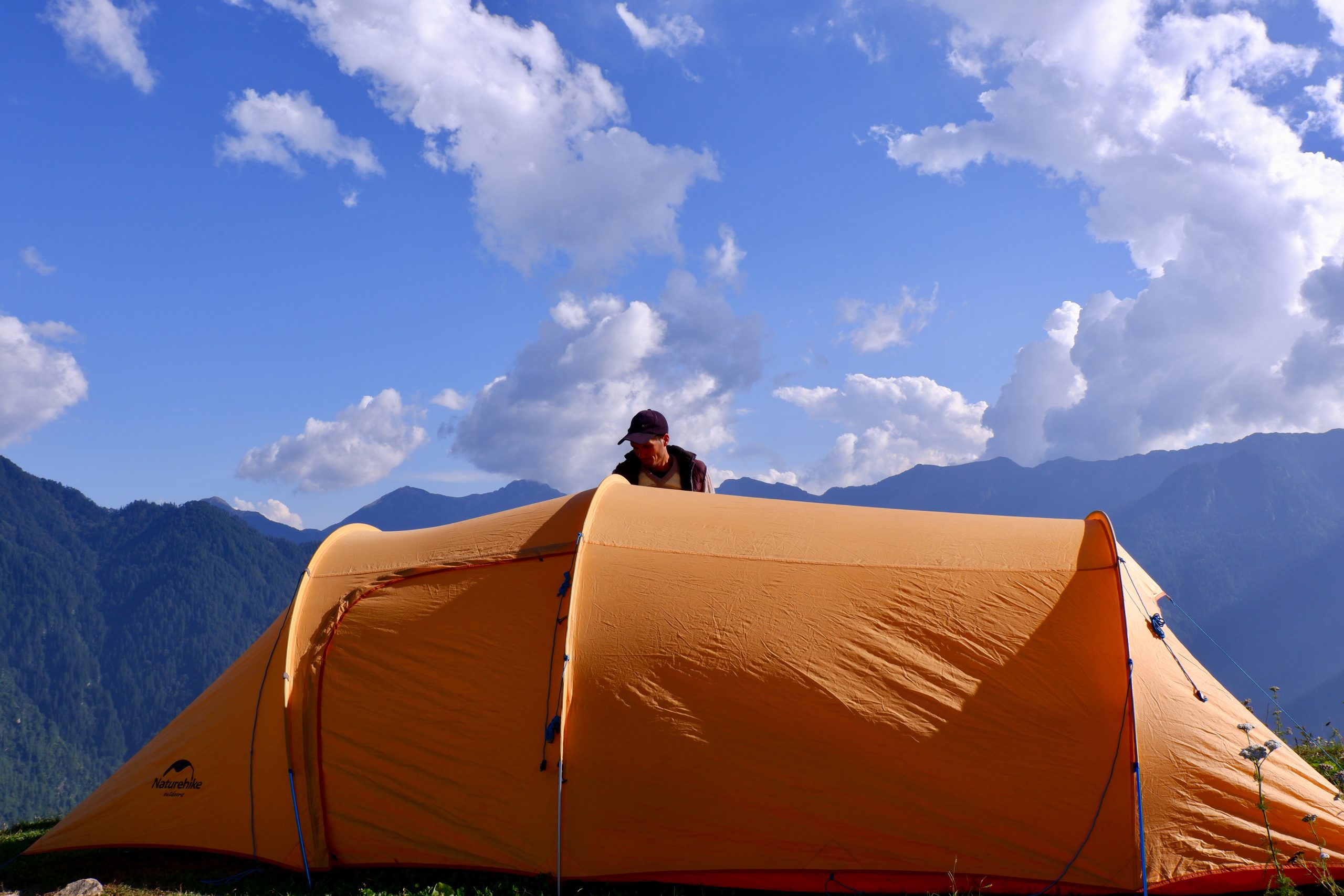 “my” tent
“my” tent
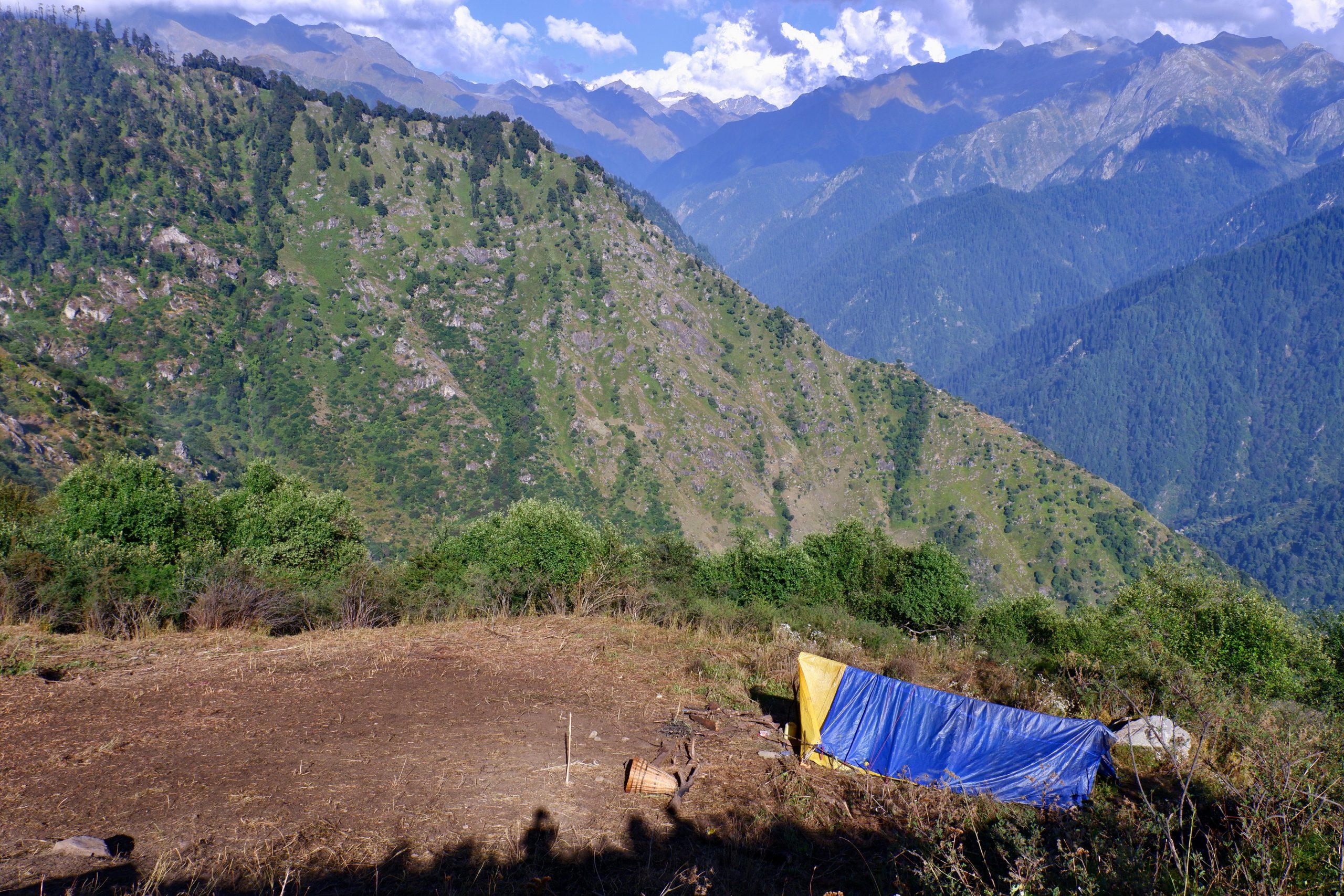 view to shepherd’s place
view to shepherd’s place
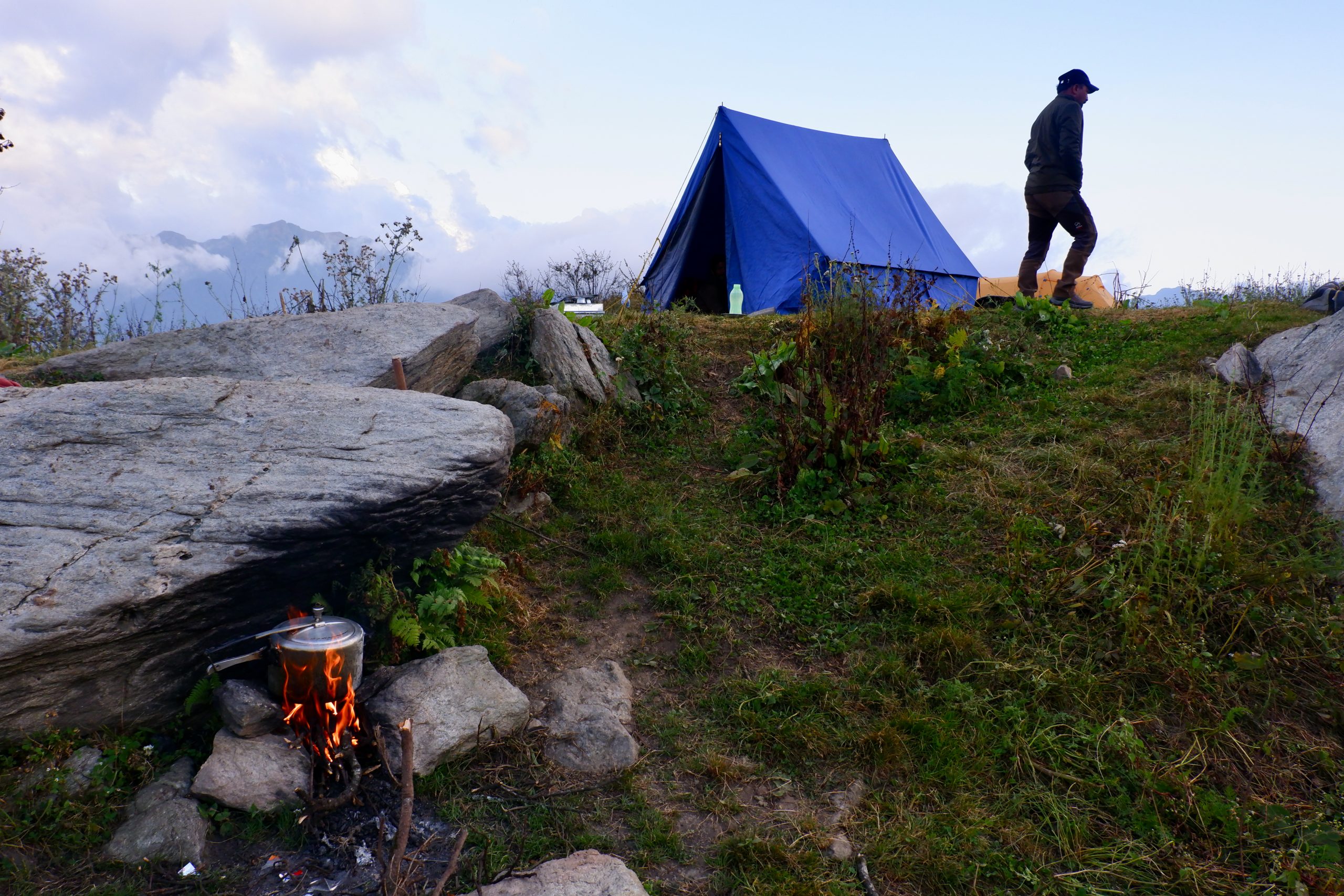 cooking tent with additional cooking source
cooking tent with additional cooking source
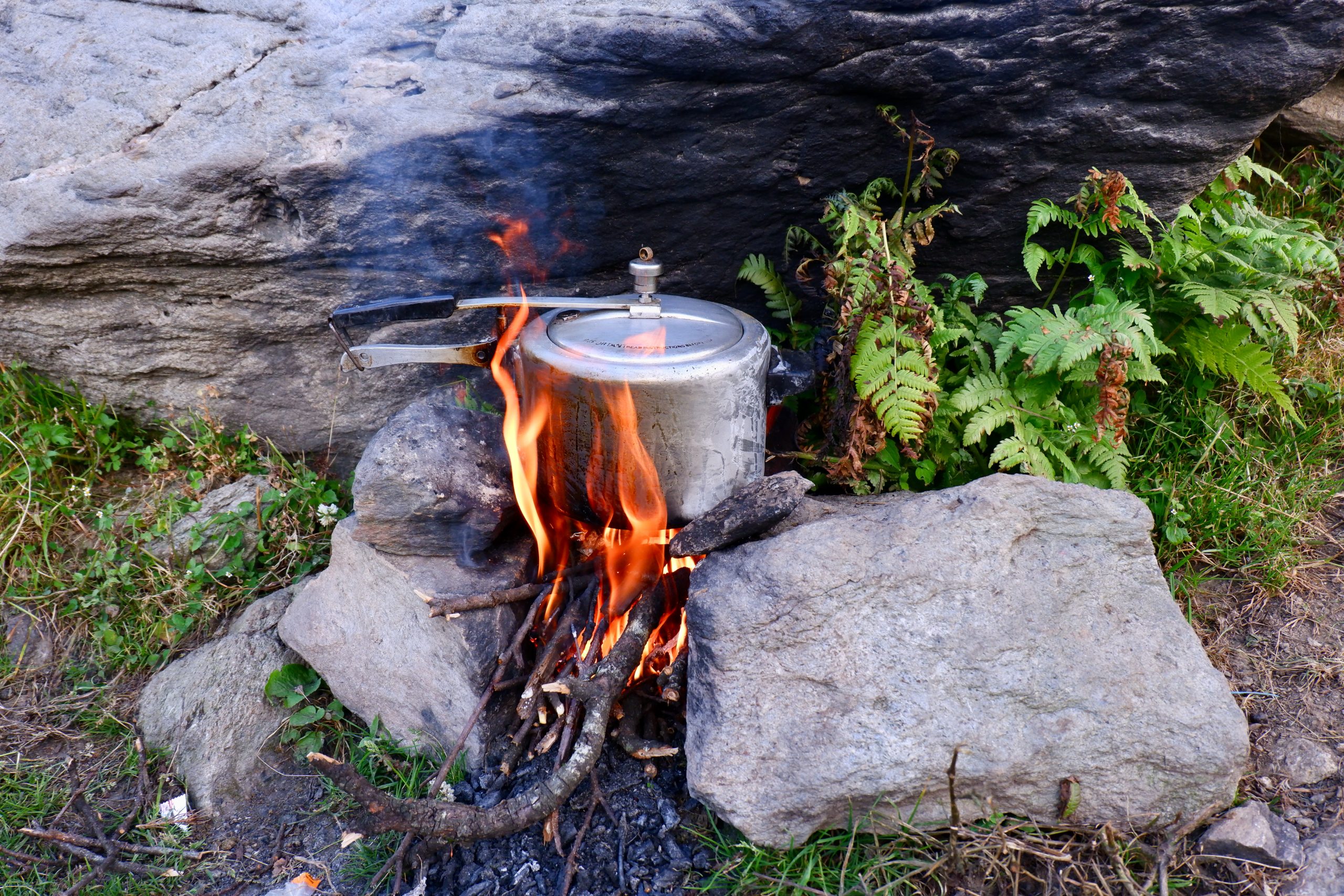 cooking pot
cooking pot
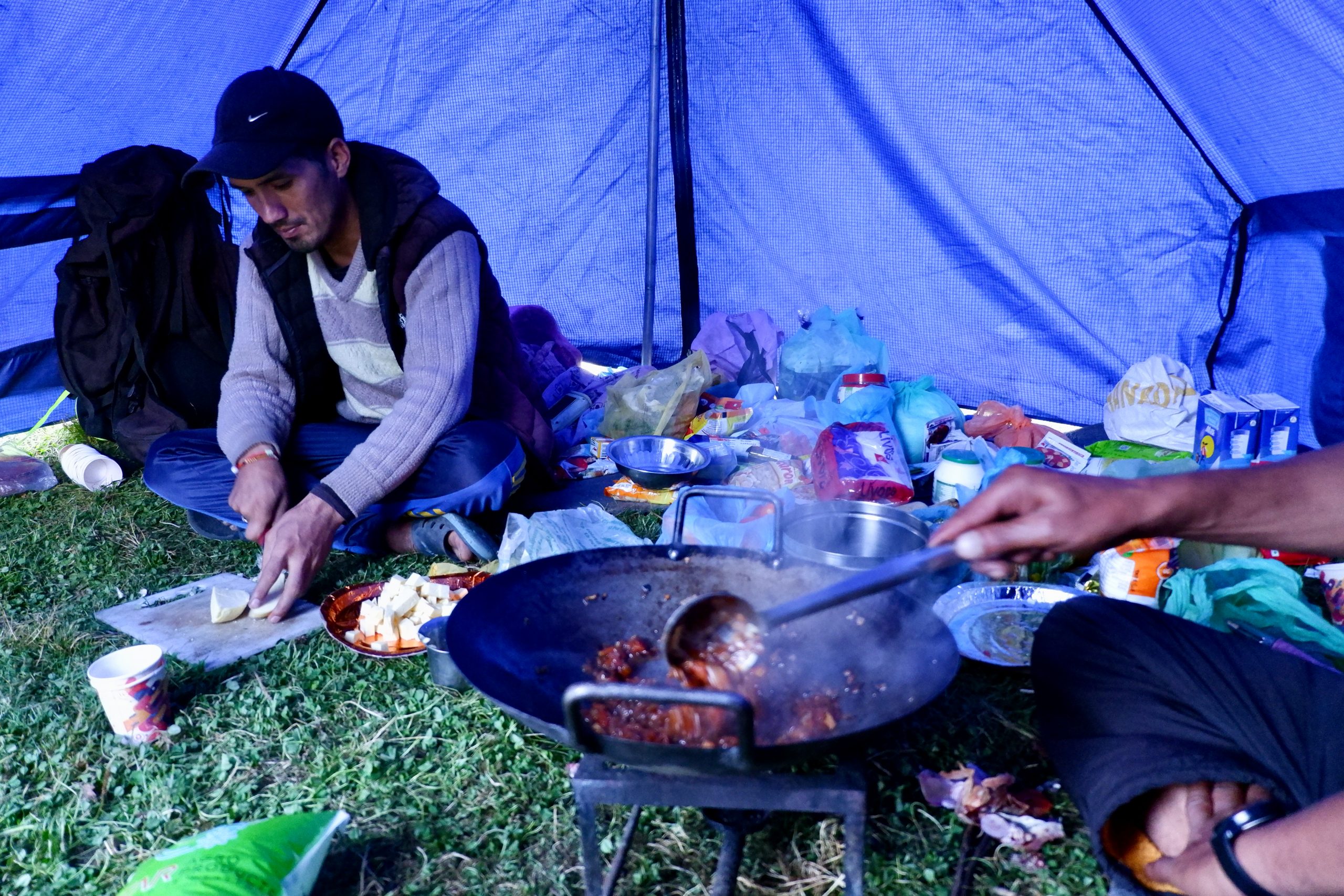 preparing food
preparing food
But what you are obviously allowed to do here: make a fire with wood lying around. So not only was there extra cooking, no, we even got a great bonfire! There we had dinner and a cosy get-together. Keshav spent an enormous amount of time lecturing in Hindi about politics in Himachal Pradesh, which he was not happy with. It was about education and mainly corruption. While India is politically dominated by the BJP party, in HP the Congress party rules. But according to Keshav, it doesn’t matter, under both parties the conditions are deplorable. I was spared the details.
 bonfire
bonfire
There will be more pictures of this campsite in the next blog post. In the morning, I walked around taking good photos. The next day, we were supposed to go further into the national park. I lay down in the tent and realised that my last night in the tent was long before Covid and that I had missed sleeping so close to nature.
